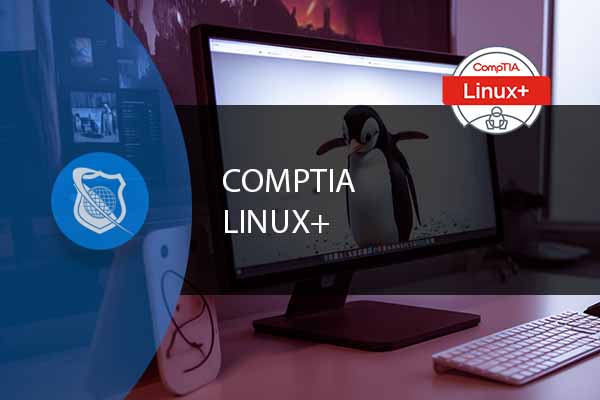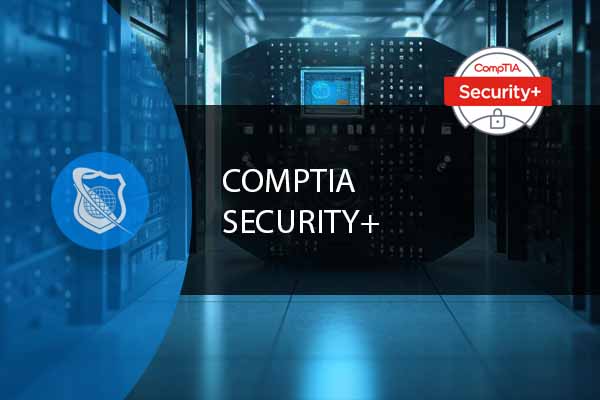In the vast expanse of cybersecurity measures, SELinux (Security-Enhanced Linux) stands out as a cornerstone for safeguarding Linux environments. Developed through a collaboration between Red Hat and the National Security Agency, SELinux has evolved into a robust mandatory access control (MAC) system, distinguishing itself from the discretionary access control (DAC) mechanisms that rely on user discretion for implementation.
CompTIA Linux+
Unlock the power of Linux with our comprehensive online course! Learn to configure, manage, and troubleshoot Linux environments using security best practices and automation. Master critical skills for the CompTIA Linux+ certification exam. Your pathway to success starts here!
The Core of SELinux: Mandatory Access Control
At its heart, SELinux is about regulating access between processes (subjects) and files (objects) based on security labels and clearances. Unlike DAC, where users can inadvertently grant excessive permissions (e.g., setting files to 777), SELinux enforces a strict policy that compares the security label of a file with the clearance of a process. If they match, access is granted, thus preventing unauthorized interactions and enhancing the overall security posture of the system.
SELinux operates on a principle of least privilege, ensuring that only necessary permissions are granted, thereby minimizing potential attack vectors. This system has become a best practice, especially in environments with stringent security requirements, such as military and enterprise sectors.
Policy Enforcement Modes: The Flexibility of SELinux
One of the strengths of SELinux lies in its enforcement modes:
- Enforcing Mode: SELinux actively denies unauthorized actions based on its policy, providing a high level of security.
- Permissive Mode: A diagnostic tool that logs violations without blocking them, allowing administrators to refine policies without disrupting system functionality.
- Disabled: SELinux is turned off, which is not recommended due to the loss of security benefits.
These modes offer flexibility, allowing administrators to transition from testing to full enforcement smoothly, ensuring that policies do not inadvertently hinder legitimate system operations.
Policy Types: Tailoring Security
SELinux policies can be tailored to specific needs:
- Targeted Policy: Applies MAC only to certain processes and files, focusing on potentially vulnerable parts of the system while leaving less critical areas under DAC.
- Strict Policy: A more comprehensive approach where SELinux controls access for all processes and files, requiring meticulous configuration to prevent operational issues.
Tools and Commands for SELinux Management
SELinux provides a suite of commands for managing policies and diagnosing issues:
sestatusandgetenforcedisplay the current status and mode of SELinux.setenforcetoggles between enforcing and permissive modes.chconandrestoreconadjust file labels to match policy requirements, ensuring that new or modified files comply with SELinux policies.
Network Administrator Career Path
This comprehensive training series is designed to provide both new and experienced network administrators with a robust skillset enabling you to manager current and networks of the future.
SELinux vs. AppArmor: A Comparative Perspective
SELinux and AppArmor are both powerful security modules for Linux, designed to enforce mandatory access control (MAC) policies that restrict which processes can access which files, directories, and other system resources. While both aim to enhance the security posture of Linux systems, they do so using different models and methodologies. Understanding these differences is crucial for system administrators and security professionals when deciding which to implement in their environment.
SELinux (Security-Enhanced Linux)
Model: SELinux is based on the principle of least privilege, where every process and system resource has a policy that defines its allowed interactions. It operates using a complex model that allows for incredibly granular control over system components.
Implementation: SELinux policies are enforced by labeling every file, process, and object with a type, and policies are written in terms of these labels. It uses the concept of security contexts, a mechanism for defining the clearance of processes and the sensitivity of objects. This allows for a highly detailed policy configuration.
Flexibility: SELinux offers a range of policy types, including targeted and strict policies, providing flexibility in how restrictive the access controls are. This enables administrators to apply SELinux policies selectively to the parts of the system that need them most, while leaving less critical areas less restricted.
Management: Due to its complexity and the level of detail in its policy definitions, SELinux can be challenging to manage and configure. However, this complexity allows for highly secure configurations that are tailored to the specific needs of an organization.
AppArmor
Model: AppArmor takes a simpler, more path-based approach to access control. It restricts program capabilities with profiles that are attached to programs rather than types or labels. These profiles define what files and capabilities a program can access.
Implementation: AppArmor profiles are easier to create and manage because they are based on the file paths and do not require the extensive labeling system that SELinux uses. Profiles specify the access rights of individual applications to system resources.
Flexibility: While AppArmor is simpler and more straightforward to use than SELinux, this simplicity can sometimes result in less granular control over permissions. However, for many standard applications and server environments, AppArmor provides sufficient security controls without the complexity of SELinux.
Management: AppArmor is often considered easier to configure and manage, especially for those with less experience in managing Linux security. The path-based policy definitions are more intuitive for users familiar with Linux filesystems.
Choosing Between SELinux and AppArmor
The choice between SELinux and AppArmor often comes down to the specific needs and capabilities of the organization, as well as the expertise of the system administrators. SELinux offers more granular control and is well-suited to environments where security is a paramount concern, such as government and military applications. AppArmor, with its simpler management and configuration, is often preferred for environments where ease of use and straightforward policy management are prioritized.
In summary, SELinux provides a more robust and complex system suitable for highly secure and customized environments, while AppArmor offers a user-friendly approach that is easier to implement and manage for general-purpose security. Both systems have their merits, and the choice between them should be based on the specific security requirements, administrative expertise, and the environment in which they will be deployed.
Conclusion: The Imperative of SELinux in Modern Security
The evolution of SELinux from a niche security enhancement to a critical component of Linux security underscores its importance in the contemporary cybersecurity landscape. By offering robust mandatory access control, flexible enforcement modes, and tailored policies, SELinux enables organizations to protect their critical assets effectively. Whether for compliance, operational security, or as part of a comprehensive security strategy, SELinux has proven to be an invaluable tool for securing Linux environments against the ever-evolving threats of the digital age.
Secure Your Networks and Prevent Password Breaches
Our robust CompTIA Sec+ course is the perfect resouce to ensure your company’s most valuable assets are safe. Up your security skills with this comprehensive course at an exceptional price.
Key Term Knowledge Base: Key Terms Related to SELinux and AppArmor
Understanding the key terms related to SELinux (Security-Enhanced Linux) and AppArmor (Application Armor) is crucial for anyone involved in Linux security, system administration, or cybersecurity. Both SELinux and AppArmor are powerful Linux security modules that provide mechanisms for enforcing access control policies, which are essential for protecting systems and data from unauthorized access and other security threats. Familiarity with the terms related to these technologies will help in effectively configuring, managing, and troubleshooting security policies on Linux systems.
| Term | Definition |
|---|---|
| SELinux | A security module integrated into the Linux kernel that provides a mechanism for supporting access control security policies, including mandatory access controls (MAC). |
| AppArmor | A Linux kernel security module that allows the system administrator to restrict programs’ capabilities with per-program profiles. Profiles can limit the resources programs can access. |
| Mandatory Access Control (MAC) | A type of access control in which the operating system constrains the ability of a subject or initiator to access or generally perform some sort of operation on an object or target. |
| Targeted Policy | A SELinux policy type that focuses on confining specific services as opposed to applying a system-wide policy. |
| Enforcing Mode | A mode in SELinux or AppArmor where the security policy is actively enforced, blocking unauthorized actions and logging them. |
| Permissive Mode | A mode in SELinux or AppArmor where violations of the security policy are logged but not blocked. This mode is useful for debugging. |
| Policy Module | A collection of rules that define the security policy for SELinux or AppArmor. Policy modules can be customized and loaded into the security system. |
| Security Context | In SELinux, a way to assign security attributes or labels to subjects (like processes) and objects (like files) in the system, used to make access control decisions. |
| Profile | In AppArmor, a set of rules that define the capabilities and permissions for a program or a group of programs. Profiles determine what files, capabilities, and network accesses a program can use. |
| Audit Log | A file that records security-relevant events, such as when actions are blocked or allowed by SELinux or AppArmor. This can be used for monitoring and troubleshooting security policies. |
| Confinement | The practice of restricting the actions that software can perform based on defined policies, effectively limiting potential damage from exploits or misconfigurations. |
| Access Vector Cache (AVC) | In SELinux, a cache that stores access decisions to speed up security checks. |
| Boolean | In SELinux, a toggle that can turn certain policy features on or off without requiring a policy reload. |
| Complaint Mode | A mode in AppArmor similar to SELinux’s permissive mode, where policy violations are logged but not enforced. |
| DAC (Discretionary Access Control) | A type of access control where access to objects is determined by the identity of the subjects and/or the groups to which they belong. The owner of the object has discretion over who can access the object. |
| Role-Based Access Control (RBAC) | A method of restricting system access to authorized users based on roles and using them to determine access. |
| Type Enforcement | A key feature of SELinux that allows access control decisions to be made based on the type of object and the type of subject. |
| User | In SELinux, the first part of a security context that identifies the SELinux user identity associated with a process or file. |
| Domain | In SELinux, a label that represents the execution state of a process, used in making access control decisions. |
| Transition | In SELinux, a change in the domain of a process when it executes another process, based on the rules defined in the policy. |
| Capability | In the context of both SELinux and AppArmor, specific privileges that a process may have, such as the ability to use certain system calls. |
| Teardown | The process of removing or disabling a security policy or module, such as SELinux or AppArmor, from a Linux system. This is typically only done for troubleshooting or when changing to a different security module. |
Frequently Asked Questions Related to SELinux
What is SELinux and How Does It Enhance Security?
SELinux, short for Security-Enhanced Linux, is a mandatory access control (MAC) mechanism integrated into the Linux operating system to provide enhanced security. Unlike discretionary access control (DAC), SELinux enforces strict policies that govern the interaction between processes and files, based on security labels and clearances. This ensures that even if a user grants excessive permissions to a file, SELinux can prevent unauthorized access, significantly reducing vulnerabilities and strengthening the system’s defense against malicious activities.
What Are the Different Modes of SELinux?
SELinux operates in three modes: Enforcing, Permissive, and Disabled. In Enforcing mode, SELinux blocks unauthorized access based on its security policies. Permissive mode allows SELinux to log policy violations without actually blocking them, which is useful for debugging and policy refinement. Disabled mode turns off SELinux, which is not recommended due to the loss of security protections. These modes provide administrators with the flexibility to adapt SELinux to their security needs and operational requirements.
How Does SELinux Compare to AppArmor?
While both SELinux and AppArmor are mandatory access control systems designed to enhance Linux security, they differ in their approach and implementation. SELinux applies security controls based on inodes, allowing for detailed and granular security policies. AppArmor, on the other hand, uses pathnames to enforce security policies, which some users find easier to manage. SELinux is commonly used in Red Hat-based systems, whereas AppArmor is favored by Debian-based distributions. The choice between SELinux and AppArmor often depends on the specific needs, preferences, and distribution of the Linux system in use.
What Are the Key Benefits of Using SELinux?
The key benefits of using SELinux include enhanced system security, prevention of unauthorized access, and flexible policy management. SELinux’s mandatory access control system provides a robust layer of security that is not solely dependent on traditional user permissions, thereby offering protection against both internal and external threats. Its ability to operate in different modes allows for seamless policy testing and implementation, ensuring that security measures do not interfere with legitimate system functionalities.
How Can Administrators Manage and Configure SELinux?
Administrators can manage and configure SELinux using a variety of commands and tools. The sestatus and getenforce commands display the current status and enforcement mode of SELinux. The setenforce command allows switching between enforcing and permissive modes. For policy management, chcon and restorecon commands are used to adjust file labels to comply with SELinux policies. Additionally, the SELinux policy management tool suite provides comprehensive capabilities for creating, modifying, and managing security policies, enabling administrators to tailor SELinux to meet the specific security requirements of their systems.



























